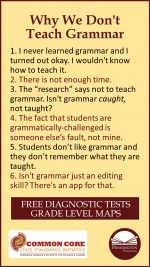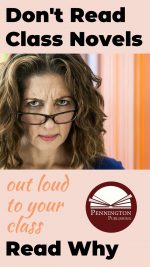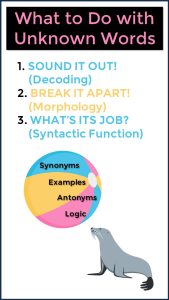Ten Tips to Teach On-Demand Writing
It’s not a perfect world. In a perfect world, there would be no direct writing assessments. Elementary and middle school students would not compose to the tune of the ticking clock. High school students would not write fearfully, knowing that the on-demand writing task on the high school exit exam could be the difference between walking the stage with grandparents, aunts, cousins, and siblings cheering or sitting at home with completion certificate in hand. College students would not spill their all-nighter, coffee-laden, infusion of knowledge into blue books under watchful grad student eyes. Prospective employees would not be forced to produce a timed writing sample in the Human Resources office as part of their interview process. Life could be better. All writing tasks could make sense, but they don’t. Students don’t care about our friendly debate regarding process vs. on-demand writing. However, until the revolution comes, teachers do a disservice to their students by not preparing them for the on-demand writing tasks of an imperfect world.
Here are ten tips to teach on-demand writing as part of a thriving writing curriculum:
1. Teachers need to assign the types of writing tasks that the on-demand writing task will be assessing. For example, seventh grade students in California are potentially assessed on these writing applications: narrative, response to literature essay, summary, and persuasive essay. Students need to write both full process papers in these domains (genres or applications) and practice on-demand writing for each of these tasks.
2. Teachers need to develop a common language of instruction for Writing Direction Words, especially writing direction terms that will appear in on-demand writing tasks. Checking out on-demand release questions, commonly referred to as the writing prompts, is a must to ensure that the language of the direct writing assessment will be familiar to your students.
3. Students need to practice composing thesis statements. Since the preponderance of on-demand writing tasks from the fourth grade through college involve informational or persuasive essays, the focus of both process papers and on-demand writing should be the essay form. The key to an effective essay is the thesis statement. Learning to dissect the writing prompt, to use the language from the writing prompt, and to formulate a specific thesis statement that concisely states the purpose or point of view of the ensuing essay is critically important.
4. Learning the structure of an informational or persuasive essay is essential. The foundational structure should be a flexible model that students can use to adjust to the form demanded by the writing prompt. For example, a response to literature essay can use the same essay structure as a persuasive essay with a few “tweaks” such as including paraphrased quotations for the former and a counterpoint argument for the latter. Here is a step-by-step method that teaches students to memorize the essay structural components in order of the overall task.
5. Practice each stage of the on-demand writing process on its own, in sequenced clusters, and as a whole: writing prompt analysis, reading an excerpt—if provided, formulating a thesis statement, completing a brief pre-write of the body paragraphs, composing the essay, revising the essay, and proofreading the essay. Teaching these components will build writing flexibility and develop writing fluency.
6. Practice on-demand writing under loosely timed (with instructional interruptions) and strictly timed (no teacher interruptions) conditions. Time management is key to success. Students need to learn how to gauge time and allot time to each component of the writing process based upon the amount of time that they will have with the direct writing assessment.
- Gauging time is not common sense; it must be practiced. In fact, many students have a completely unrealistic sense of time. Try this exercise: Students close their eyes and raise silent hands when they believe two minutes has passed. Stop the exercise after all hands have been raised. Keep track of their times with the aid of a few open-eyed students. Repeat this practice weekly and see how students will improve their recognition of time.
- Allotting time to each component and practicing under simulated testing conditions will give students confidence in the process. Teachers who skip this instructional practice are in for trouble on exam day. For example, all teachers tell their students (as do the writing assessment directions) to pre-write, but students know that this stage of the writing process earns them no points. So many students routinely skip this step and jump into the essay itself. Or worse yet, students will pre-write way too much and not have time for composing.
7. Tell students to write a lot. Although we like to believe that brevity and concise wording gets points, this is not the case on direct writing assessments. Teach students to focus on their audience. Graders are trained to read the thesis statement carefully, skim for main points or arguments, search for evidence to back each up, and quickly read conclusions. Tell students to use all of their allotted time and reward them for doing so.
8. Model and have students practice writing specificity. Specific descriptions (show-me diction) for narratives and evidence (a variety needed) for informational and persuasive essays get students points. Transitions are keys to writing coherence and unity. Have a transitions poster clearly displayed and frequently reference the categories and examples of transitions at the beginning, end, and within sentences. Give students practice in revising unspecific writing and writing without transitions.
9. Teach students to vary their sentence structure. The best way to do so is to teach the “50-50 Rule.” 50% of the writing should be concise subject-verb-complement sentences. The other 50% should be expanded sentences with different grammatical sentence openers. Teach the most useful grammatical sentence openers that are appropriate to the students’ grade levels.
10. Manage the stress levels and motivate your students for success. Test anxiety inhibits this success. Students know that direct writing assessments are high-stakes tests—either for the school or themselves. Keep the instructional focus positive when working with on-demand writing. Work with student attitudes toward the assessment itself. For example, teaching students that excitement and anxiety have the same physiological response, so they can choose to be excited, not anxious about the challenge. Let them know that you have high expectations, but they are capable of achieving your standards. Build their self-confidence through successive approximation. In other words, success with each component of the on-demand writing process will lead to success with the assessment. Teach students that their voices are valid ones and that they will each have a unique perspective to impart in their essay. Knowing your students helps ensure their success at all developmental levels: pre-teen, middle school, high school, and college.
*****

TEACHING ESSAYS BUNDLE
The author’s TEACHING ESSAYS BUNDLE includes the three printable and digital resources students need to master the CCSS W.1 argumentative and W.2 informational/explanatory essays. Each no-prep resource allows students to work at their own paces via mastery learning. How to Teach Essays includes 42 skill-based essay strategy worksheets (fillable PDFs and 62 Google slides), beginning with simple 3-word paragraphs and proceeding step-by-step to complex multi-paragraph essays. One skill builds upon another. The Essay Skills Worksheets include 97 worksheets (printables and 97 Google slides) to help teachers differentiate writing instruction with both remedial and advanced writing skills. The Eight Writing Process Essays (printables and 170 Google slides) each feature an on-demand diagnostic essay assessment, writing prompt with connected reading, brainstorming, graphic organizer, response, revision, and editing activities. Plus, each essay includes a detailed analytical (not holistic) rubric for assessment-based learning.







